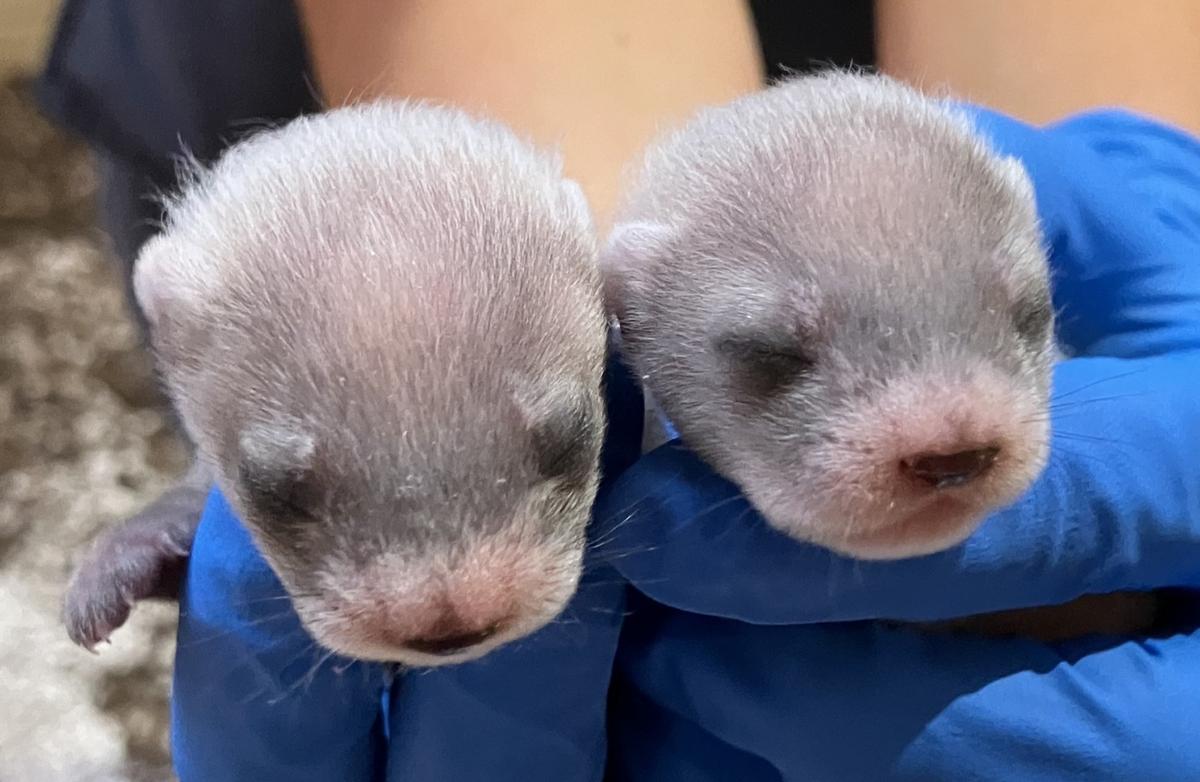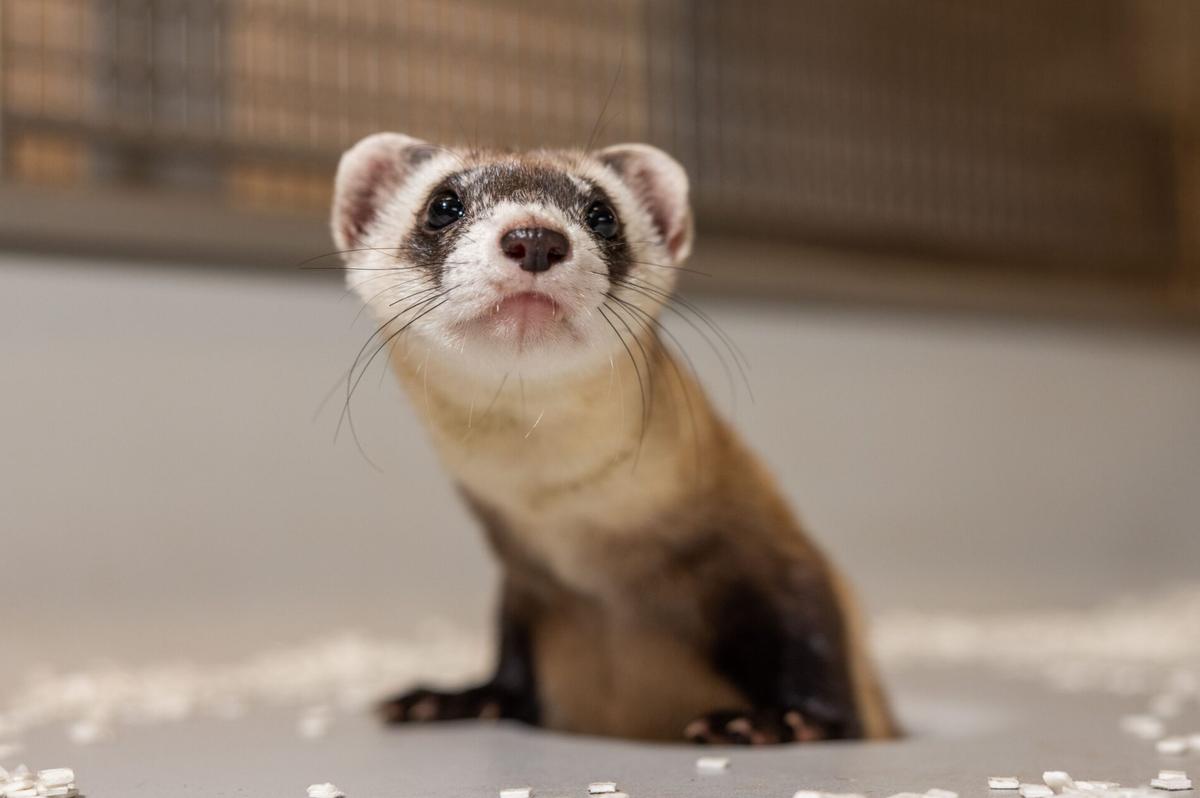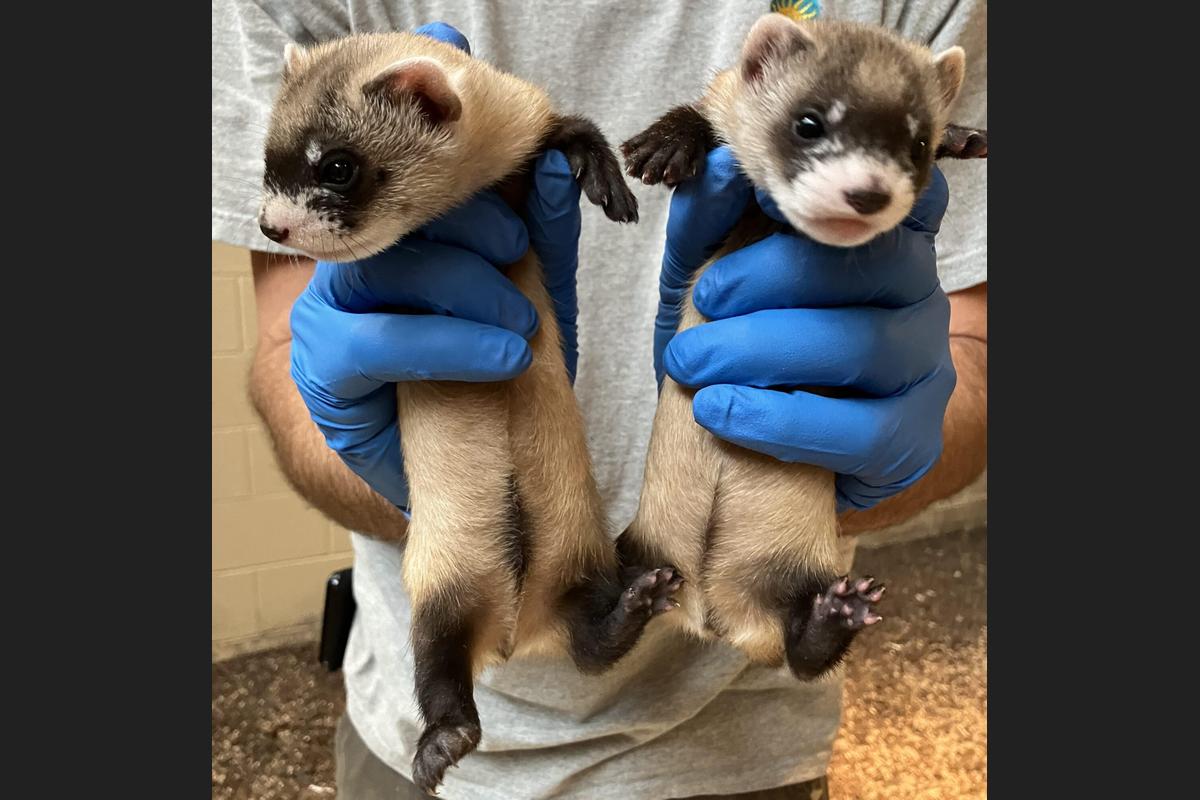Two baby black-footed ferrets have made history as the first endangered animals to be born from a cloned mother. Scientists are hoping their birth will help in the recovery of this endangered species.
DNA and Cloning
Every living thing has DNA – a special code that tells it how to grow. Usually an animal gets half of its DNA from its father, and the other half from its mother. Cloning is a complicated scientific process that uses the DNA of one living thing to create a new creature that is a copy of the original.
Four years ago, the US Fish and Wildlife Service (FWS) announced that it had cloned a black-footed ferret called Elizabeth Ann. Elizabeth Ann was cloned from Willa – a female ferret that had died in the 1980s. That was a big step for the endangered species. Now Elizabeth Ann has two other cloned sisters – Noreen and Antonia.

(Source: Smithsonian’s NZCBI, [Public Domain], via FWS.)
In June, Antonia gave birth to a boy (Red Cloud) and a girl (Sibert). The birth of the ferrets is very encouraging for scientists hoping to protect the species.
Large numbers of black-footed ferrets once lived in the American West. The ferrets live mainly off of the prairie dogs they catch. When farmers began killing off prairie dogs, lots of ferrets died, too. The ferrets were also threatened by diseases.
By the 1980s, there were only seven living black-footed ferrets left in the world. The US Fish and Wildlife Service (FWS) had captured the ferrets to protect them. For years, the FWS worked to raise more ferrets in captivity. The program worked, and over time, groups of ferrets were also released back into the wild.
😕
This image has not been loaded because of your cookie choices. To view the content, you can accept 'Non-necessary' cookies.
By the 1980s, there were only seven living black-footed ferrets left in the world. The US Fish and Wildlife Service (FWS) worked to protect and raise more ferrets in captivity. The program worked, and over time, ferrets were also released back into the wild. Above, a black-footed ferret at an FWS program in Colorado.
Currently, there are about 300 black-footed ferrets in captivity and about 250 in the wild. But all black-footed ferrets living today are related to the seven animals rescued in the 1980s.
Well, almost all. The cloned ferrets are not.
Here’s why that’s important: Normally, when there are large numbers of an animal species, the animals have lots of small differences. Their DNA gets mixed up when different pairs of animals have babies. This is a good thing. The small differences in their DNA can help protect the group as a whole.

(Source: Roshan Patel/Smithsonian CBI, [CC BY 4.0], viaFWS.)
But because all living black-footed ferrets are closely related, they all have similar weaknesses.
But the cloned ferrets came from an animal that lived over 30 years ago, and her DNA was very different. Now this DNA is beginning to get mixed back in.
The father of Red Cloud and Sibert is a 3-year-old male ferret that was raised in captivity. Now the baby ferrets, called “kits”, have a mixture of their father’s DNA and Antonia’s cloned DNA. This mixing of DNA should help make future black-footed ferrets healthier in general.

(Source: Smithsonian’s NZCBI, via Revive & Restore.)
The young kits certainly seem very healthy. They are already eating solid food, and no longer need milk from their mother. Ben Novak, one of the scientists behind the project, says the kits are “adorable” but “wild and quite fierce”. He says one of the kits gave a veterinarian a very serious bite on his thumb.
By spring, these young ferrets will be old enough to begin having their own kits, and will pass their special DNA on to their children.
